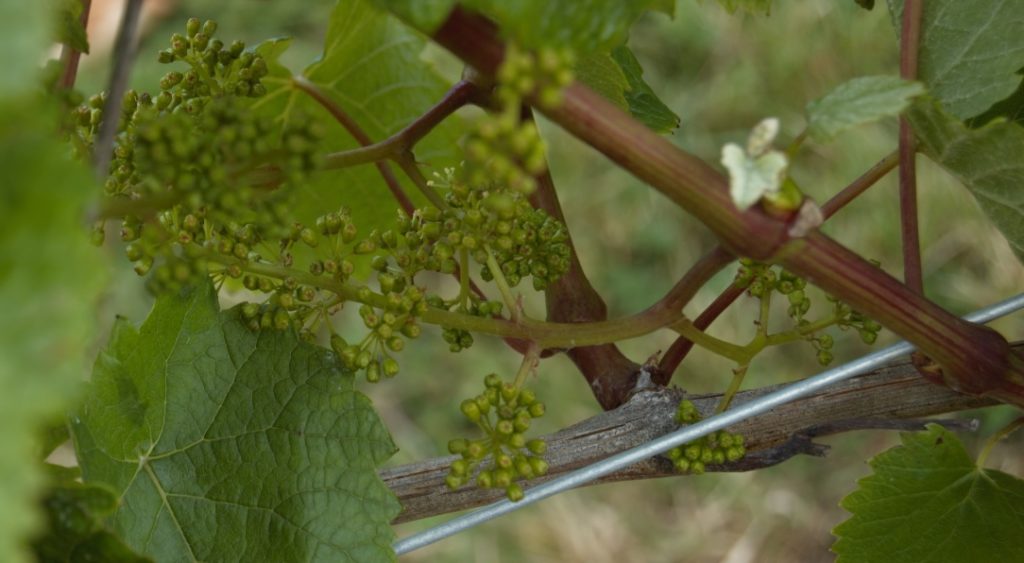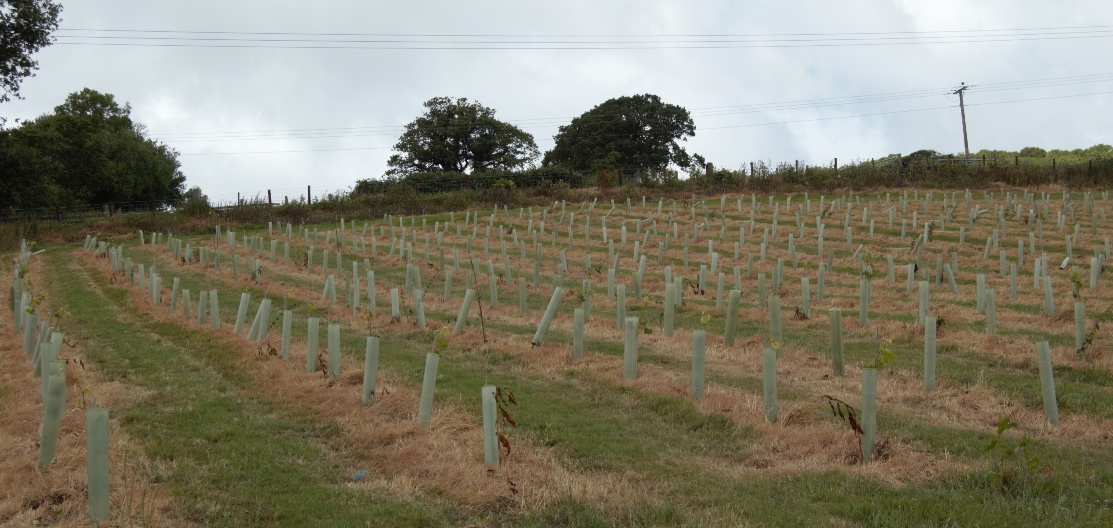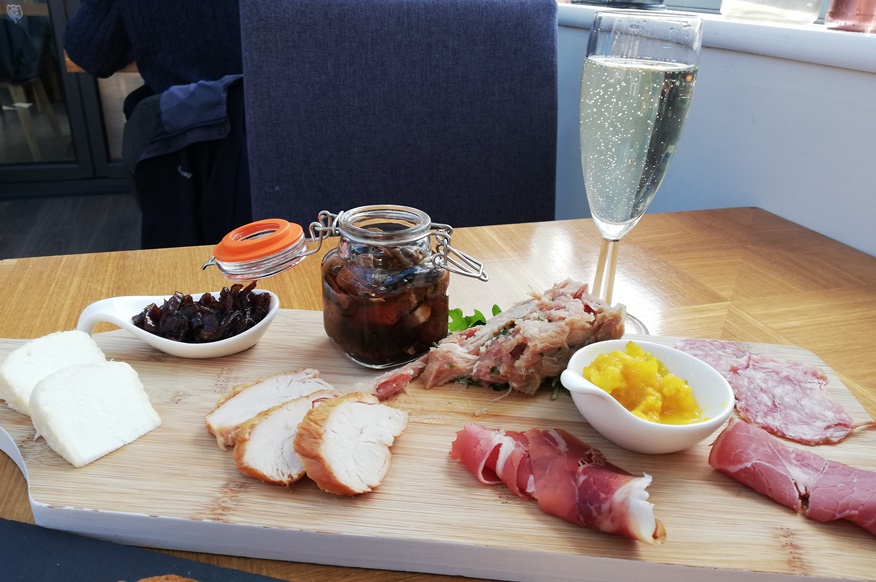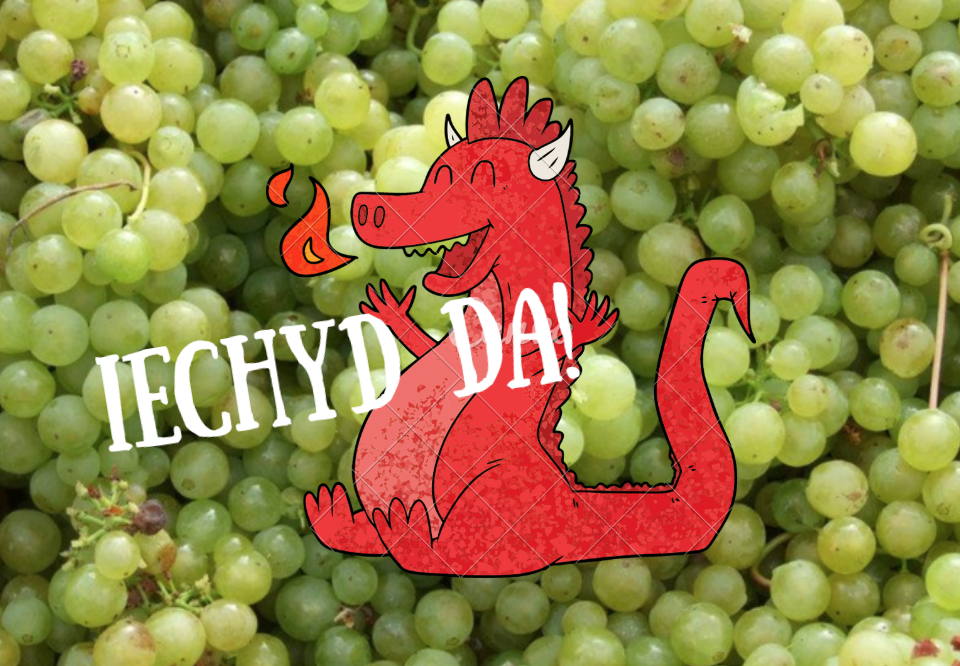Grapevines love long, dry summers and autumns with plenty of sunshine and warmth. Damp weather means the grapes struggle to ripen and vines may suffer from fungal infections like botrytis. Prolonged or heavy rain can lead to waterlogged soils, which vines really hate. And don’t even get me started on the impact of frost, hail or high winds, which can all destroy the flowers during florescence or have other devastating effects on the fruit. This is why areas in northern France and Germany are considered very marginal for growing winegrapes.

That being the case, you might be forgiven for thinking that people in even more northerly latitudes, like England and Wales, would consider their local climate too unpredictable, cool and damp to produce reliable amounts of drinkable wine each year and look for more viable ways to earn an income. However, there are a surprising number of optimists across the UK who have planted vineyards and are indeed making wine. And, while those in southern England may be the ones who have grabbed the headlines lately, they are far from the only viticulturists in the UK.

A cloudy day at Gwinllan Conwy Winery
I normally associate North Wales with cool temperatures and cloud cover – much like that in the photo above. The verdant green hills suggest that plenty of rain falls here and farming tends to based more on cattle and sheep than grapes. So I was intrigued to find out for myself just how Welsh wine production has developed and how viable viticulture is in this area. In June, I headed to Gwinllan Conwy Vineyard, a small, family-owned property close to the picturesque city of Conwy in North Wales. Colin and Charlotte Bennett currently have some 3 acres planted with vines, together with a visitor centre, where they offer lunches, wine tours and tastings, which all seem very popular.
It seems that while North Wales is inclined to be cool and damp, Gwinllan enjoys a particular mesoclimate which helps keep it snow and frost-free, even when other areas a short distance away are white with frost or snow. There are a number of reasons for this. Firstly, Gwinllan is located on a peninsular surrounded on three sides by water – the Irish Sea to the north and east and the River Conwy to the west. This proximity to water moderates the temperatures, making them slightly warmer in winter than other areas a little more inland. Secondly, to the west lies the Snowdonia mountain range. As the prevailing winds roll in from the west, much of their humidity falls as rain on the mountains, so the land further east lies in the rain shadow and is much drier. There is also forest to the west, which acts as a natural windbreak.
 At Gwinllan, the Bennetts have planted the vines on south-facing slopes, which means the grapes get the maximum possible exposure to the sun and, when it rains, the water will drain downhill, keeping the roots dry, especially as the soil is free-draining shale. The vines are trained on trellis in the Guyot style, mainly single Guyot, a system that is beneficial for controlling vigour. The rows are oriented to ensure a good flow of air to help keep the vines healthy.
At Gwinllan, the Bennetts have planted the vines on south-facing slopes, which means the grapes get the maximum possible exposure to the sun and, when it rains, the water will drain downhill, keeping the roots dry, especially as the soil is free-draining shale. The vines are trained on trellis in the Guyot style, mainly single Guyot, a system that is beneficial for controlling vigour. The rows are oriented to ensure a good flow of air to help keep the vines healthy.
Most of the vineyard is planted with hybrid varieties chosen for their ability to ripen lots of grapes even in cool, damp conditions: Phoenix, Solaris, Ortega, Muscat Blue and Rondo. Check out our Fast Facts: England and Wales guide for information about these varieties.
Aside from fungal problems – which the choice of varieties seeks to combat – the main issues at Gwinllan are caused by rabbits, sheep, birds and slugs. They put plastic protectors around the trunks of the vines to deter the rabbits; of course these create a nice cosy environment for the slugs.

Newly planted Pinot Noir with anti-rabbit protection
The Bennetts do not make their own wines but instead contract winemaking services from Halfpenny Green in Staffordshire. The grapes are harvested when they reach 80˚ Oechsle, which is around 10.8% potential alcohol, so it is probable that the must is chaptalized by the winemaker to ensure that the final wines have an alcohol level of 11-12% ABV. The style of all the Welsh wines I tried suggested temperature-controlled fermentation in stainless steel, with cool temperatures for the whites.
Colin Bennett is upbeat about the future. The vineyard is doing fine for now, with tourism being a significant income stream, while some local stores and restaurants also stock the wines. He explained that experts are predicting that because of climate change, North Wales is set to enjoy similar climatic conditions to the Loire in another five years’s time. The family has therefore planted Pinot Noir this year and Colin is also interested in experimenting with Loire stalwarts Sauvignon Blanc and Cabernet Franc. It will be interesting to see how it works out.

Local food platter and Sparkling Solaris
Welsh wine & Tasting notes
Rosé
Made from Rondo, Muscat Blau and Phoenix.
This pale, almost orange-coloured wine has a medium nose with herbaceous aromas of grass, together with green fruit like apples, followed by a subtle red fruit not of elderberries and strawberries. There was also a saline note. In the mouth, it is dry and light-bodied with moderate acidity and a short finish. Pleasant and easy-drinking.
Solaris White 2016
This very pale lemon-coloured wine has a medium nose featuring herbaceous notes like nettles and grass, together with green fruit (apples and pears) and a vegetal note like radish, with just a subtle hint of hazelnuts. The wine is dry, with moderate acidity, more herbaceous than fruity in the mouth. The finish is short.
Pydew 2016
Made from Phoenix and Ortega.
This very pale coloured wine had a light nose, lightly citrus, with faint notes of white fruit like peaches and some herbaceous notes again. The wine is off-dry with medium+ acidity, a light peach and apricot taste and the finish is short.
Rondo 2016
This wine spent a couple of months in French oak.
This wine is medium ruby with purple hues. The nose is fairly pronounced with notes of smoke and toast upfront, followed by black fruit notes like damsons and blackberries. This medium-bodied wine has medium acidity and light, smooth tannins. The most dominant flavours are smoke, peat and toast, reminiscent of a peated whisky. The finish is a bit aggressive.
Sparkling Solaris
This is a traditional method sparkling wine and, to judge by the emerging autolytic notes, it most likely spent 9 months on the lees prior to disgorgement.
This is a fresh, easy-drinking wine with light body, crisp acidity and a medium finish. Definitely my favourite from this tasting.
Have you enjoyed any Welsh wine recently? Add your favourite producers in the comments below!

